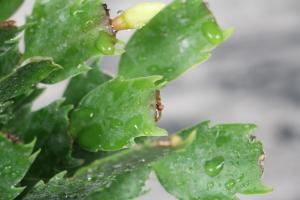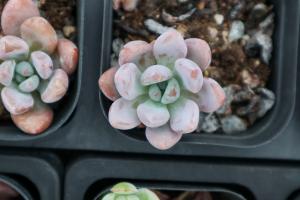Should You Disc Dead Tomato Plants or Pull Them Up?
Tomatoes are a favorite among gardeners, and for good reason. Not only are they delicious, but they are also relatively easy to grow. However, even the most experienced gardener can run into problems with their tomato plants. One of the most common issues is dead plants. When a tomato plant dies, the question arises: should you disc it or pull it up?
What Does "Disc" Mean?
Before we dive into the question at hand, let's define what we mean by "disc." When we say "disc," we are referring to the practice of using a disc harrow to break up and mix soil. This is often done when preparing a field for planting or after harvesting a crop.
Pros and Cons of Discing Dead Tomato Plants
Now, let's consider the pros and cons of discing dead tomato plants. One advantage of discing is that it can help to break up any diseased or infested plant material. This can help to prevent the spread of diseases and pests. Additionally, discing can help to improve soil structure and fertility by incorporating organic matter into the soil.
However, there are also some drawbacks to discing dead tomato plants. For one, it can be difficult to control where the plant material ends up. If the plant was affected by a disease or pest, you don't want those organisms to be spread around your garden. Additionally, if you have a small garden, or if the dead plant is located in a high traffic area, discing can be cumbersome and may cause damage to nearby plants.
Pros and Cons of Pulling Up Dead Tomato Plants
So what about pulling up dead tomato plants? One advantage of this approach is that it allows you to more carefully control where the plant material ends up. If the plant was affected by a disease or pest, you can dispose of it in a way that won't spread those organisms around your garden. Additionally, pulling up the plant allows you to quickly see if there are any additional problems (such as root rot) that may be affecting your other plants.
However, there are also some drawbacks to pulling up dead tomato plants. For one, it can be time-consuming, especially if you have a large garden. Additionally, if the plant was diseased or pest-infested, pulling it up may not be enough to prevent the spread of those organisms. Finally, pulling up the plant can disturb the soil and potentially damage nearby plants.
Which Approach Should You Take?
So, which approach should you take when dealing with dead tomato plants? The answer will depend on a variety of factors, including the size of your garden, the location of the dead plant, and whether or not the plant was affected by a disease or pest.
If you have a small garden and the dead plant is located in a high traffic area, it may be best to pull it up to avoid disturbing nearby plants. Additionally, if the plant was affected by a disease or pest, pulling it up will allow you to more easily control the spread of those organisms.
However, if you have a large garden and the dead plant is located in an area where discing is feasible, this may be a better approach. Discing can help to improve soil structure and fertility, which can be beneficial for your remaining plants.
The Bottom Line
Dealing with dead tomato plants can be frustrating, but it's important to handle them correctly to prevent the spread of diseases and pests. Ultimately, the approach you take will depend on your specific situation, but by considering the pros and cons of each option, you can make an informed decision that will help to keep your garden healthy and thriving.

 how many times do yo...
how many times do yo... how many planted tre...
how many planted tre... how many pine trees ...
how many pine trees ... how many pecan trees...
how many pecan trees... how many plants comp...
how many plants comp... how many plants can ...
how many plants can ... how many plants and ...
how many plants and ... how many pepper plan...
how many pepper plan...
































